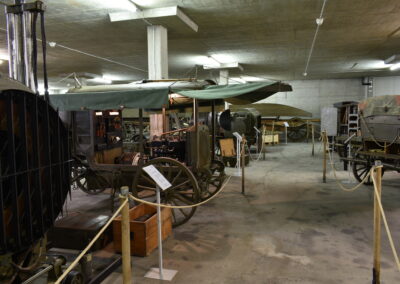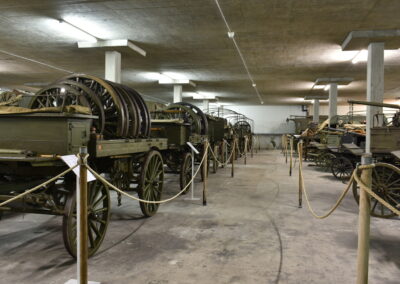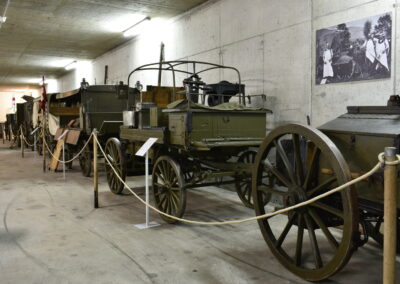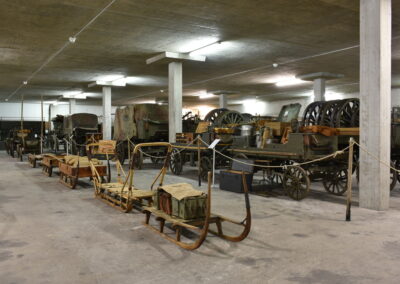The collection of horse-drawn wagons / fourgons
With the establishment of the War Material Administration (KMV) in 1850, the procurement, maintenance and storage of army material was organized professionally for the first time. This also resulted in precise specifications for vehicles: Mass, weight, material and equipment were precisely specified or standardized. This is where the regular collaboration of vehicle manufacturers with the army started.
Depending on the weight, the wagons were pulled by up to 6-horse-teams, in exceptional cases even more. Every left hand horse in a team was mounted, the right hand ones were led as a near horse.
The collection consists of about 110 vehicles and is one of the largest of its kind in Europe. The oldest object dates back to 1856. The majority of the wagons are ‘operable’ and are loaned out and demonstrated if required.
The wagons and their contents are elaborately conserved and restored; they are expertly cleaned, if possible disassembled and reassembled again. Missing parts are either added or restored if still possible. Damage caused by dust, old lubricants, grease, mold, insect infestation, rust, verdigris, cracks are cleaned and treated accordingly. The original components are preserved wherever possible, as are the signs of wear and tear. All measures are documented and are reversible.
All this ensures that the knowledge about the army’s horse-drawn mobility is preserved as far as possible and that the artefacts, some of which are unique, can be still shown to later generations.



